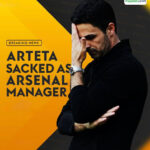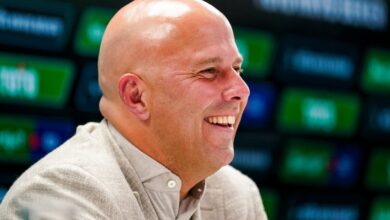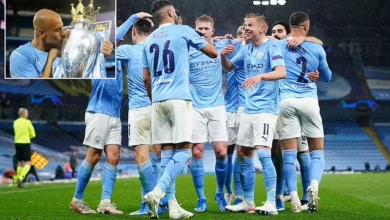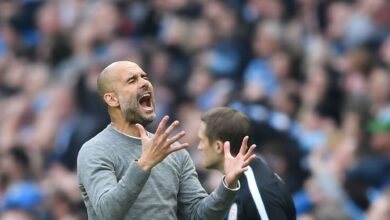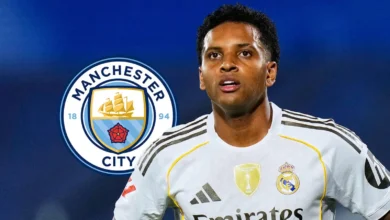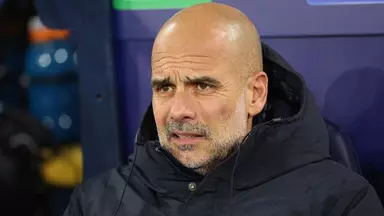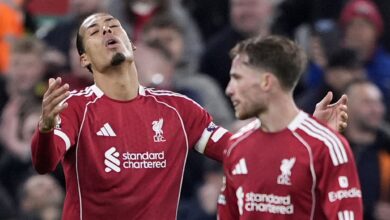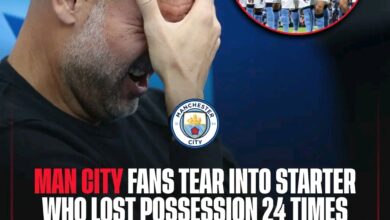Arsenal ‘deciding between’ FINAL TWO strikers as radical Berta U-turn mooted
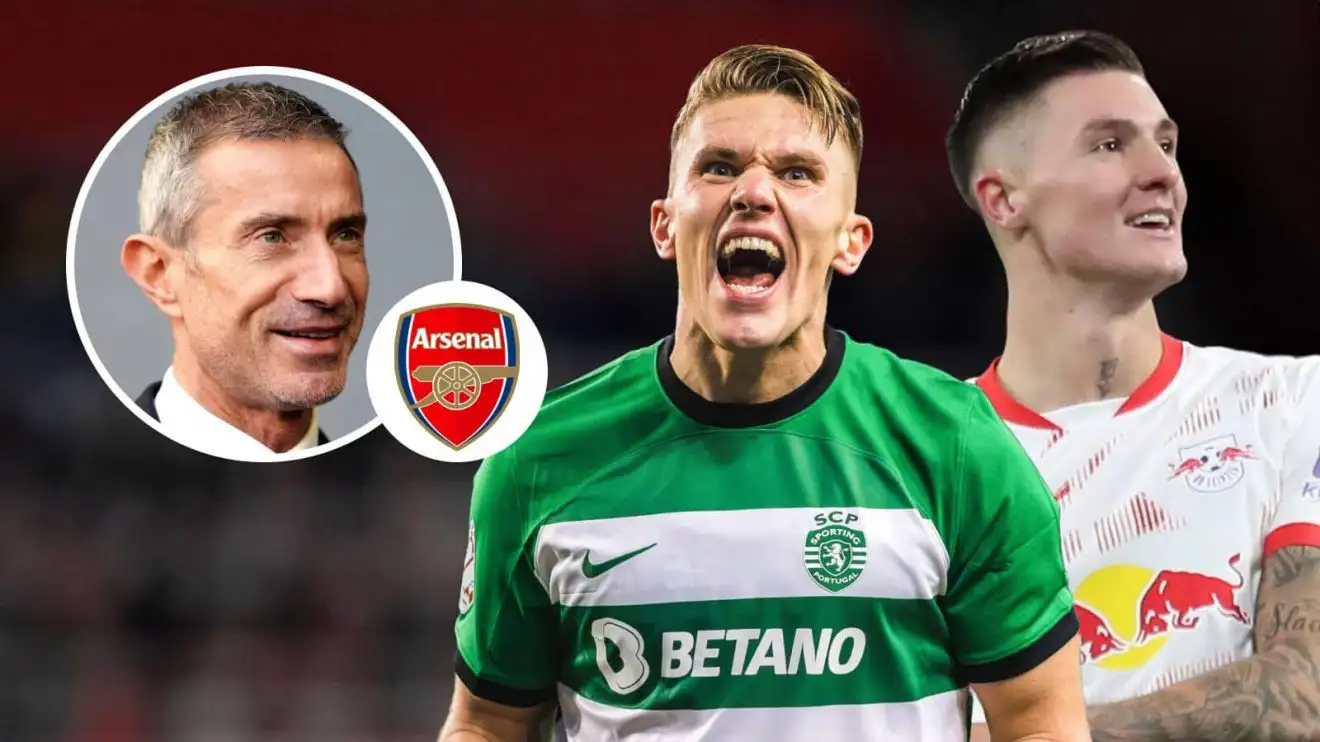
Arsenal find themselves at a critical juncture in their evolution under Mikel Arteta, with the North London club facing the stark reality that what promised to be a season of significant achievement may instead conclude in profound disappointment. The Gunners have stumbled in their Premier League title pursuit and suffered a comprehensive defeat to Paris Saint-Germain in the Champions League semi-finals, leaving them potentially at risk of even missing out on a top-five finish with just two rounds of Premier League fixtures remaining. This underwhelming conclusion to what began as a campaign full of promise has only heightened the urgency surrounding Arsenal’s summer transfer strategy, with the striker position emerging as the primary area requiring immediate reinforcement. The current attacking options at Arteta’s disposal have proven inadequate for a club with championship aspirations, with Gabriel Jesus failing to deliver the consistent goal threat expected of a leading Premier League striker, while Kai Havertz, despite his undeniable talent, remains a player whose natural position lies elsewhere than as a traditional number nine.
Arsenal’s technical team has been diligently working behind the scenes to identify the ideal candidate to spearhead their attack next season, with several high-profile names featuring prominently on their shortlist. TEAMtalk’s transfer correspondent Fraser Fletcher reported back in November 2024 that Newcastle United’s Alexander Isak represents Arteta’s dream target for the striker position, a player whose combination of physical presence, technical refinement, and clinical finishing would make him an ideal fit for Arsenal’s system. However, the pursuit of Isak appears fraught with complications, not least Newcastle’s reported valuation of approximately £150 million for the Swedish international. Furthermore, Newcastle’s potential qualification for the Champions League next season could effectively eliminate any possibility of them sanctioning the departure of their prized asset, forcing Arsenal to pivot toward alternative options.
According to sources close to the club, Arsenal have been actively monitoring several other elite forwards, including RB Leipzig’s Benjamin Sesko, Sporting CP’s Viktor Gyokeres, and Napoli’s Victor Osimhen. Each of these strikers brings a distinctive profile to the table, with Sesko’s combination of youth and athleticism making him an enticing long-term investment, Gyokeres offering proven goal-scoring pedigree and physical dominance, and Osimhen representing perhaps the most complete package, albeit likely at a premium financial outlay. The Independent journalist Miguel Delaney has now revealed in his Reading the Game newsletter that Arsenal have narrowed their striker search to a direct shootout between Sesko and Gyokeres, with the final decision potentially influenced by the recent arrival of Andrea Berta as the club’s new Sporting Director.
Delaney’s report suggests an intriguing dynamic at play within Arsenal’s recruitment structure, with much of the preliminary work having focused on securing Sesko from RB Leipzig. The Slovenian international has long been admired by Arsenal’s scouting department, with his combination of imposing physical stature, acceleration, and clinical finishing drawing favorable comparisons to a young Erling Haaland. At just 22 years old, Sesko represents the archetypal modern center-forward, capable of leading the line independently while possessing the technical attributes to integrate seamlessly into Arsenal’s intricate attacking patterns. His age profile aligns perfectly with Arsenal’s recruitment philosophy under Arteta, focusing on securing young talent with significant development potential and resale value.
However, the appointment of Andrea Berta as Arsenal’s new Sporting Director has introduced a fascinating wrinkle to the club’s striker pursuit. Berta, who built his reputation through shrewd recruitment practices at Atletico Madrid, is reportedly advocating strongly for Viktor Gyokeres, the Swedish international who has enjoyed a sensational campaign with Portuguese champions Sporting CP. Gyokeres presents a compelling alternative to Sesko, offering a more proven goal-scoring record at the elite level, with his powerful running, intelligent movement, and ruthless finishing making him one of Europe’s most coveted forwards. The 27-year-old possesses the physical attributes to thrive in the Premier League’s intense environment, having previously demonstrated his capabilities during a productive spell with Coventry City in the Championship.
Delaney’s insights reveal that Arsenal’s final decision between Sesko and Gyokeres will likely hinge on a detailed analytical assessment of factors including transfer fee, age, potential for growth, and immediate impact potential. This methodical approach reflects the data-driven recruitment philosophy that has characterized Arsenal’s transfer strategy in recent years, with the club seeking to extract maximum value from their considerable but not unlimited financial resources. The contrast between the two primary targets offers a fascinating glimpse into Arsenal’s strategic thinking, with Sesko representing a higher-ceiling, longer-term investment, while Gyokeres offers a more immediate solution with a proven track record of elite goal-scoring production.
Beyond the Sesko-Gyokeres debate, Arsenal have also been linked with a potential move for Wolverhampton Wanderers forward Matheus Cunha, although Delaney’s report suggests that Manchester United remain significant favorites to secure the Brazilian’s signature. The Red Devils are reportedly at an advanced stage in negotiations for Cunha, with Arsenal’s interest seemingly more peripheral at this juncture. This development aligns with the broader indication that Arsenal’s striker search has indeed narrowed to the aforementioned final two candidates, with Sesko and Gyokeres emerging as the clear frontrunners to lead Arsenal’s attack next season.
The summer transfer market for elite center-forwards promises to be particularly competitive, with several Premier League giants seeking reinforcements in that critical position. Manchester United appear focused on securing Cunha while also advancing talks for Ipswich Town’s promising young striker Liam Delap, whose performances have attracted attention from Chelsea as well. Meanwhile, Arsenal’s London rivals Chelsea may find themselves exploring the market for whichever high-profile options remain available, with Eintracht Frankfurt’s Hugo Ekitike reportedly featuring on multiple Premier League clubs’ shortlists.
Arsenal’s striker pursuit represents just one element of what promises to be a transformative summer at the Emirates Stadium, with the club also reportedly monitoring potential reinforcements in other positions. Arteta is understood to admire one of Real Madrid’s star forwards, although the identity of this target remains undisclosed. Los Blancos are reportedly open to sanctioning the departure of this unnamed player, potentially creating an opportunity for Arsenal to strengthen their wide attacking options alongside their center-forward recruitment.
In defensive terms, renowned transfer expert Fabrizio Romano has provided insight into Real Madrid’s perspective on Arsenal’s standout defender William Saliba, particularly in the context of Madrid’s impending £50 million acquisition of Bournemouth center-back Dean Huijsen. The Spanish giants’ defensive recruitment strategy could have implications for their long-term interest in Saliba, whom many consider among the Premier League’s finest defenders following his exceptional development under Arteta’s guidance.
The significance of Arsenal’s striker recruitment cannot be overstated in the context of their broader ambitions. The absence of a prolific center-forward has arguably represented the final missing piece in Arteta’s otherwise meticulously constructed team, with the Gunners demonstrating elite-level defensive organization and midfield control, only to occasionally lack the cutting edge required to convert dominance into tangible results. Both Sesko and Gyokeres would offer significant upgrades on Arsenal’s current striking options, potentially providing the clinical finishing touch needed to transform promising performances into championship-winning consistency.
The contrasting profiles of Arsenal’s two primary striker targets reflect the club’s multifaceted strategic considerations. In Sesko, they would secure a forward with arguably the higher ceiling, whose combination of physical attributes and technical refinement could make him one of Europe’s premier strikers for the next decade. His relative youth would align with Arsenal’s preference for developing talent internally, potentially enabling him to grow alongside the club’s existing core of young stars including Bukayo Saka, Gabriel Martinelli, and William Saliba. The financial investment required for Sesko would likely be substantial but potentially represent excellent value considering his projected development trajectory and long-term impact potential.
Gyokeres, conversely, offers a more established profile, with his remarkable goal-scoring record in Portugal demonstrating his readiness to make an immediate impact at an elite Premier League club. His physical attributes and direct running style would add a dimension currently lacking in Arsenal’s attack, potentially creating space for the club’s creative talents to exploit. While perhaps offering less long-term upside than Sesko due to his more advanced age, Gyokeres represents a proven commodity whose integration into Arsenal’s system could yield immediate dividends in their pursuit of major silverware.
The influence of Andrea Berta’s arrival as Sporting Director adds a fascinating layer to Arsenal’s striker recruitment strategy. Berta earned widespread acclaim for his work at Atletico Madrid, where he orchestrated several masterful transfer windows that enabled Diego Simeone’s side to compete consistently with the significantly wealthier Barcelona and Real Madrid. His reported preference for Gyokeres suggests a pragmatic approach focused on securing a striker capable of making an immediate impact, potentially reflecting a recognition that Arsenal’s development under Arteta has reached a stage where immediate success has become imperative.
The financial dynamics surrounding both potential deals will inevitably influence Arsenal’s final decision. Sesko’s release clause at RB Leipzig is understood to be substantial but potentially more manageable than the €100 million figure reportedly attached to Gyokeres at Sporting CP. However, salary demands, agent fees, and contract structure will all factor into the comprehensive financial assessment undertaken by Arsenal’s recruitment team. The club’s relatively conservative wage structure compared to some Premier League rivals necessitates careful consideration of any significant financial commitment, particularly for a position as pivotal as the central striker.
Arsenal’s current predicament reflects the challenges of competing at the summit of European football without the guaranteed goal threat provided by an elite center-forward. Despite constructing a squad replete with technically gifted players and implementing a sophisticated tactical approach, Arteta’s team has occasionally found themselves lacking the ruthlessness required to convert dominance into victories. The acquisition of either Sesko or Gyokeres would represent a significant statement of intent, demonstrating the club’s ambition to address this critical weakness and position themselves for sustained success across domestic and continental competitions.
The timing of Arsenal’s striker pursuit coincides with a potentially pivotal moment in the club’s recent history. Having restored their status as legitimate title contenders under Arteta’s stewardship, the Gunners now face the challenge of taking the final step toward securing major silverware. The disappointment of their Champions League elimination by PSG and their inability to sustain their Premier League challenge provides both motivation and justification for significant investment in the squad, with the striker position representing the most obvious area requiring elite reinforcement.
Beyond the technical considerations surrounding their striker recruitment, Arsenal must also navigate the psychological implications of their transfer strategy. The signing of a globally recognized center-forward would send a powerful message to both the existing squad and their Premier League rivals, demonstrating the club’s unwavering commitment to competing for the game’s most prestigious prizes. Such a statement signing could potentially catalyze enhanced performances from the current playing group while also increasing Arsenal’s attractiveness to other elite talents considering their next career move.
The competition for elite strikers this summer promises to be fierce, with several Premier League clubs seeking reinforcements in this critical position. Manchester United’s reported interest in Cunha indicates their recognition of the need for additional firepower, while Chelsea’s well-documented search for a reliable goal-scorer suggests they too will be active in pursuing center-forward targets. Arsenal’s ability to act decisively and secure their preferred option could prove crucial in avoiding prolonged negotiations that risk allowing rival clubs to hijack their priority targets.
The broader context of Arsenal’s summer recruitment strategy extends beyond just the striker position, with reports suggesting the club is monitoring elite talent across multiple areas of the pitch. These ambitious transfer plans align with Arteta’s vision of constructing a squad capable of competing consistently at the highest level, recognizing that marginal improvements across several positions can collectively yield significant competitive advantages. However, the striker position undoubtedly represents the most pressing priority, with the potential impact of securing an elite center-forward far exceeding that of reinforcements elsewhere in the squad.
Arsenal’s final decision between Sesko and Gyokeres will likely hinge on a comprehensive assessment of numerous factors, including immediate impact potential, long-term development ceiling, tactical compatibility, financial implications, and the subjective preferences of key decision-makers including Arteta and Berta. This multifaceted evaluation reflects the sophisticated recruitment approach that has characterized Arsenal’s transfer strategy in recent years, moving away from the occasionally impulsive decisions of previous regimes toward a more measured, data-informed methodology.
The coming weeks promise to be decisive in determining Arsenal’s striking options for the 2025/26 campaign, with the club reportedly advancing their plans to secure their preferred target ahead of what promises to be an intensely competitive summer transfer market. Whether they ultimately opt for Sesko’s youthful potential or Gyokeres’ proven productivity, Arsenal’s striker recruitment represents perhaps the most significant decision the club will make this summer, potentially determining whether they can translate their evident progress under Arteta into tangible success in the form of major silverware.
For Arsenal supporters, the narrowing of the striker shortlist to two elite candidates offers cause for optimism after a season that has ultimately failed to deliver on its early promise. The prospect of Sesko or Gyokeres leading the line at the Emirates next season provides a compelling vision of how Arteta’s team might evolve, potentially addressing the final missing piece in an otherwise impressively constructed squad. While disappointment lingers regarding the current campaign’s unfulfilled potential, the club’s proactive approach to addressing their striking deficiency demonstrates a clear recognition of the improvements required to transform Arsenal from contenders into champions. As the 2024/25 season approaches its conclusion, Arsenal’s focus increasingly shifts toward the transformative potential of the summer transfer window. Their pursuit of an elite center-forward represents not merely a recruitment ex


